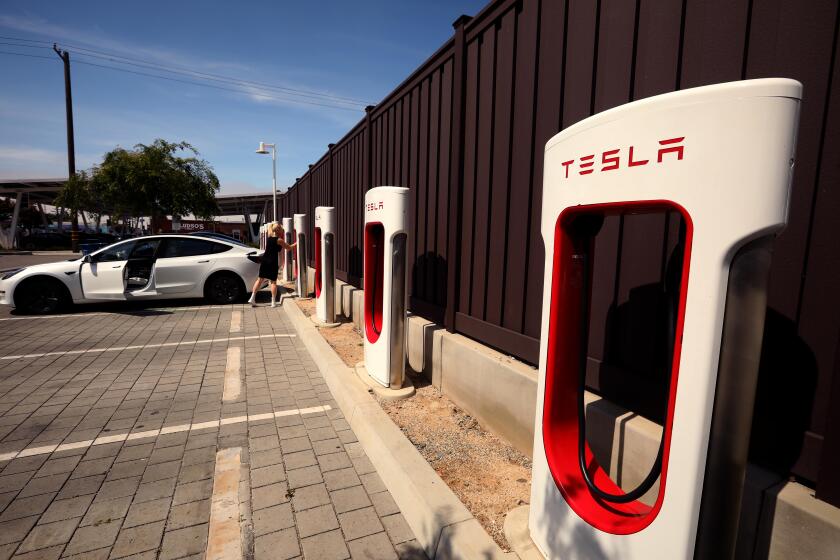COLUMN RIGHT : So Let Them Drive Without Car Insurance : Permitting drivers not to carry liability policies could cut rates without affecting safety.
“If you make a mess, clean it up,” most of us are admonished early in life. But once we leave the security of our parents’ care (and the lessons that help children become adults), our social structures often don’t support this simple admonition.
California’s automobile insurance system is a case in point.
Last week insurance commissioner Roxani M. Gillespie ordered an average rate increase of 85% for more than 1 million drivers covered by the state’s assigned-risk program. To underwrite program losses, California’s insurers wanted rates hiked nearly twice that much. On one level, these raises seem appropriate--drivers who are more accident-prone and who make more claims should pay higher rates than those who don’t. But the entire insurance system needs an overhaul.
When the state requires everyone to carry insurance, it has to make sure everyone can afford coverage. But regulations that artificially depress rates often have disastrous consequences. Proposition 103’s rate rollbacks have encouraged insurers to drop coverage on drivers with shaky traffic records. Many of these motorists then enter the assigned-risk pool. If the state sets assigned-risk rates far below regular levels, as it has in California, drivers with clean records are tempted to purchase assigned-risk coverage illegally. The Department of Insurance notes that 55% of assigned-risk drivers have no penalty points--they qualify for regular coverage but use loopholes to get lower rates. Safe drivers who don’t cheat the system have been taken to the cleaners.
Many cost-conscious reformers favor some type of mandatory no-fault plan. No-fault, combined with strict limits on lawsuits, has cut insurance rates in several states. But it causes another problem: When is it justified to limit an injured party’s right to recover damages in court?
There is another option. Unless the legislature acts by Jan. 1, California’s mandatory-coverage law will expire. But this doesn’t signal a catastrophe: Permitting drivers not to carry insurance might actually bring rates down without affecting safety.
The record bears this out. A.M. Best Co., the information-gathering arm of the insurance industry, reports that in 1988 the average annual premium in the eight states with voluntary insurance laws was 21% lower than the national average. Of the two most heavily populated optional-coverage states, average premiums ranked 26th in Virginia and 48th in Tennessee, nationally.
A voluntary system wouldn’t spell the end of auto insurance. Normally, car buyers who borrow money from financial institutions must purchase collision coverage; lenders want to guarantee they will be repaid if the car is damaged or destroyed in an accident. Insurance also provides a cushion against your own negligence or plain bad luck. Most drivers will routinely buy policies.
Conversely, a driver who couldn’t afford insurance would have a choice: Own an inexpensive car or don’t drive. In states without mandatory-insurance laws, most drivers nevertheless buy insurance--the rates range from 68% in Tennessee to 98% in Virginia. All eight states have a lower porportion of uninsured drivers than Los Angeles County, where perhaps half the motorists go uninsured.
Many argue that mandatory insurance laws are necessary--that without insurance, most drivers couldn’t repay costs of an accident. But other ways of protecting insured drivers from the uninsured are possible. Uninsured drivers who cause accidents and can’t pay could have their licenses suspended. Thus the working poor could drive uninsured as long as they exercised caution. People who live in congested areas and can’t afford insurance and might have to move somewhere else--or stop driving.
Permitting uninsured motorists will provide little solace to the accident victim faced with a pile of medical bills. Accidents involving two or more uninsured drivers will occur. But such accidents happen now--and as soaring rates drive motorists to drop insurance coverage, the number of accidents involving uninsured drivers will mushroom. Scrapping the current regulations and making coverage voluntary will increase competition, reduce rates and actually encourage some uninsured drivers to buy policies again.
People want lower rates. But mandatory coverage laws and the regulations intertwined with them won’t do the job. Fundamentally, we need to restore that old rule: Make a mess, clean it up. Those who buy insurance policies will see their rates drop--as long as they’re careful. Those who don’t had better watch themselves.



